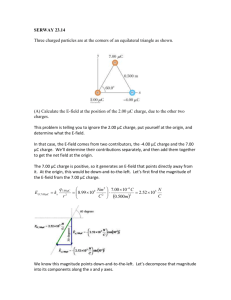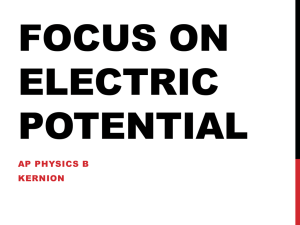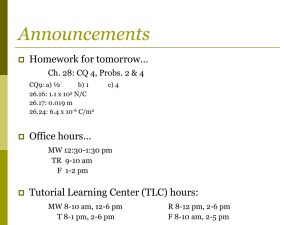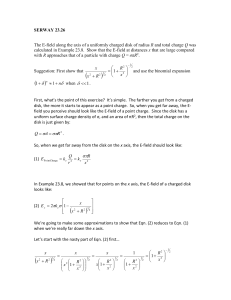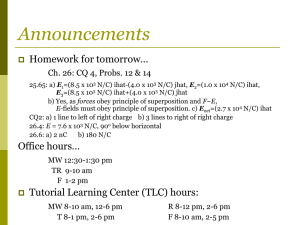2-4-2014 worksheet - Iowa State University
advertisement
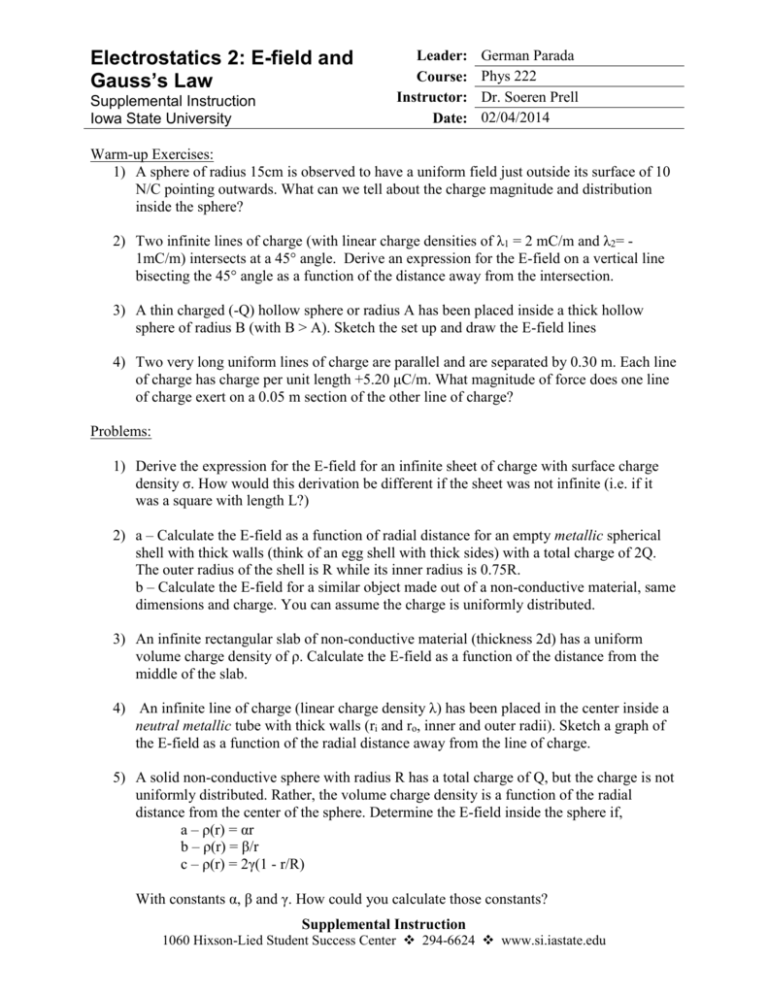
Electrostatics 2: E-field and Gauss’s Law Supplemental Instruction Iowa State University Leader: Course: Instructor: Date: German Parada Phys 222 Dr. Soeren Prell 02/04/2014 Warm-up Exercises: 1) A sphere of radius 15cm is observed to have a uniform field just outside its surface of 10 N/C pointing outwards. What can we tell about the charge magnitude and distribution inside the sphere? 2) Two infinite lines of charge (with linear charge densities of λ1 = 2 mC/m and λ2= 1mC/m) intersects at a 45° angle. Derive an expression for the E-field on a vertical line bisecting the 45° angle as a function of the distance away from the intersection. 3) A thin charged (-Q) hollow sphere or radius A has been placed inside a thick hollow sphere of radius B (with B > A). Sketch the set up and draw the E-field lines 4) Two very long uniform lines of charge are parallel and are separated by 0.30 m. Each line of charge has charge per unit length +5.20 μC/m. What magnitude of force does one line of charge exert on a 0.05 m section of the other line of charge? Problems: 1) Derive the expression for the E-field for an infinite sheet of charge with surface charge density σ. How would this derivation be different if the sheet was not infinite (i.e. if it was a square with length L?) 2) a – Calculate the E-field as a function of radial distance for an empty metallic spherical shell with thick walls (think of an egg shell with thick sides) with a total charge of 2Q. The outer radius of the shell is R while its inner radius is 0.75R. b – Calculate the E-field for a similar object made out of a non-conductive material, same dimensions and charge. You can assume the charge is uniformly distributed. 3) An infinite rectangular slab of non-conductive material (thickness 2d) has a uniform volume charge density of ρ. Calculate the E-field as a function of the distance from the middle of the slab. 4) An infinite line of charge (linear charge density λ) has been placed in the center inside a neutral metallic tube with thick walls (ri and ro, inner and outer radii). Sketch a graph of the E-field as a function of the radial distance away from the line of charge. 5) A solid non-conductive sphere with radius R has a total charge of Q, but the charge is not uniformly distributed. Rather, the volume charge density is a function of the radial distance from the center of the sphere. Determine the E-field inside the sphere if, a – ρ(r) = αr b – ρ(r) = β/r c – ρ(r) = 2γ(1 - r/R) With constants α, β and γ. How could you calculate those constants? Supplemental Instruction 1060 Hixson-Lied Student Success Center 294-6624 www.si.iastate.edu Conceptual Questions: 1) Why is it not a good idea to use a cubic Gaussian surface to calculate the E-field generated by an infinite line of charge? 2) To calculate the E field at the point indicated by the cross, I create the Gaussian surface A and I get a value for the field. However, a friend created the Gaussian surface B and claimed that the E field must be zero at that point. Who is correct? 3) What would be different in the derivation of the E-field for a line of charge if such line were not infinitely long? Can it be computed easily?

